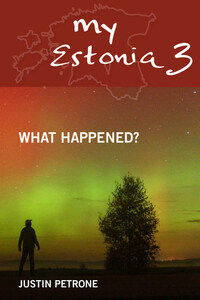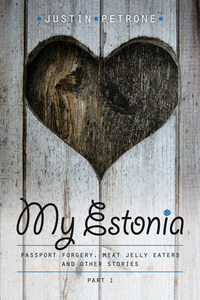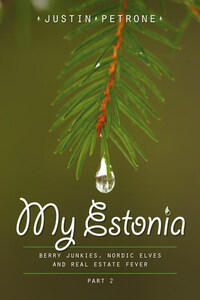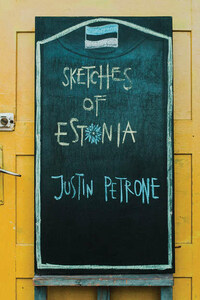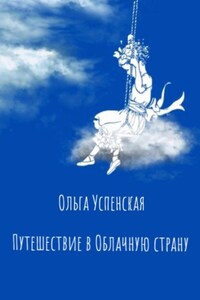WHERE THERE’S FIRE, THERE’S SMOKE
First there is fire and then there is smoke. Like clockwork.
I’ve seen it over and over again with my own eyes. You leave the old wood in the same spot through the seasons until it at last arrives, the long-awaited event: Midsummer, Saint John’s Day. Then you stuff it with newspapers, cardboard, douse it with gasoline, oil, some leftover moonshine, whatever you like. Strike the match and with a pull of the wind it erupts, like your own personal volcano.
After the fire catches, you have to wait a bit. Then you hear the squeaking and croaking and tra-la-la-ing of all the little creatures who have made their homes in the pile. Mice, toads, and newts come scampering and hustling out of that miniature hell. Running for their lives, literally. They rush to the forest or to the barn, to the meadows and streams, to the neighbor’s house, where they remember there is a safe hollow behind the walls. The Estonians call this inferno the jaanituli – Saint John’s Fire. There is shared knowledge about these holy flames. The people say that if you run and leap over the fire, you will have good luck for the next year. The Estonians really believe this. They may not believe in humdrum things, but they believe in the power of fire.
I enjoy the fires as well. I like to get bundled up close to them, to listen to the tinder as it cracks and splinters from the heat, so near that I lose sensation in the tip of my nose and the skin over my cheeks. It’s an invigorating flush, a rechristening by blaze. I like to study the colors of the flames, too, how they hue from yellow to blue, blood orange to green. There is a lot going on in just one bonfire.
My life in Estonia has been like a jaanituli. It’s been one passionate and roasting mess. I came here many years ago knowing nothing about what was about to happen, then I got married, had a kid, left for New York for a while, and then came back because I felt it calling me. I thought I might make it as an academic in Estonia, or enter the world of diplomacy, or up my journalism game and write for some famous international newspaper. Instead I wound up writing some entertaining books about Estonia. Then something strange happened. I had to go away again. Now I’m back.
My books are like the smoke from this flame of life. They smell of the thing, but are not the thing itself. They curl up and sail away pleasantly toward the stars, or linger along foggy country lanes and city streets, thick and sinister, making it hard for you to breathe.
That’s all this book is. Smoke. The smoke of fiery years spent in this windswept peninsula land.
Justin Petrone,
Back in Estonia,
April 2015
It was easy to get distracted in the toilet of Cafe Fellin because of the words on the inside of the door.
The words told about the origins of the name Viljandi, the picturesque and peculiar small town in Estonia where we lived. They were written by a local historian and typed below an old photograph of the lake front and its many villas. It was framed and covered in glass. In the cafe with its white wooden furniture and pleasant spirals of floral-printed wallpaper, you could hear the people bustling and glasses clinking, the fidgeting of a jazz guitarist, and maybe somebody waiting on the other side of that toilet door, turning the knob to remind one of the urgency of the situation. But that was too bad. I was still reading.
The Vi was an older form of vee, water in Estonian, the historian had written. The Ljandi brought to mind the ancient name of Tallinn, Lindanisse, which meant a town or stronghold. And so, there it was: Viljandi, the town on the water. It was still true in part. In old illustrations and wood carvings, you could see that the lake beside this town was higher, and the rivers were higher, too. I had heard that one could sail to Viljandi with the right kind of boat, navigating down long-lost waterways. Back then, Viljandi was a Hanseatic merchant town, connected to the outside world by its waters.
Nowadays, it felt more like a backwater. To get anywhere from Viljandi, you needed to drive. A trip to the capital, Tallinn, and back could take five hours out of your day. The second biggest city, Tartu, with our publishing house, was an hour to the east. The beach and spa resort Pärnu was an hour to the west. And I didn’t even bother taking note of how long it took to get to our farm house in Setomaa on the Russian border. On those long days, I just drove and drove.
Some people didn’t think Viljandi was a backwater though. For these self-electing few, Viljandi was a bohemian jewel sparkling with artists and activists and eccentrics, hidden away from the crass commercialism that had afflicted the rest of the country, a respite for those who preferred to see their children fingering zithers and playing among castle ruins rather than sitting behind a computer.
There were also those who condemned the so-called “city” of Viljandi as a depopulated outpost of alcoholics and pensioners. A friend, who had left Viljandi, referred to his hometown as “That Hole.”
